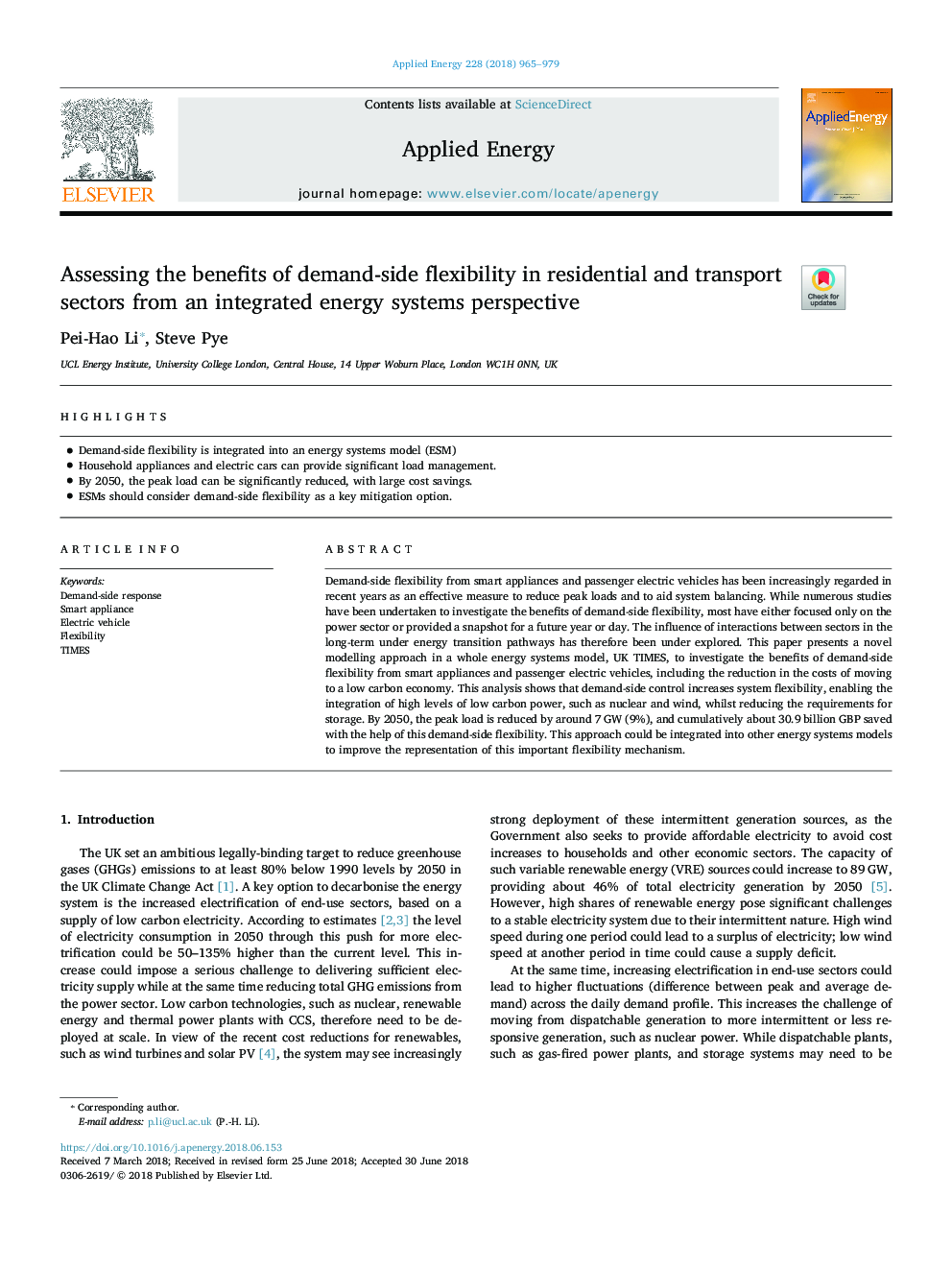| کد مقاله | کد نشریه | سال انتشار | مقاله انگلیسی | نسخه تمام متن |
|---|---|---|---|---|
| 6679785 | 1428063 | 2018 | 15 صفحه PDF | دانلود رایگان |
عنوان انگلیسی مقاله ISI
Assessing the benefits of demand-side flexibility in residential and transport sectors from an integrated energy systems perspective
ترجمه فارسی عنوان
ارزیابی مزایای انعطاف پذیری در بخش تقاضا در بخش های مسکونی و حمل و نقل از دیدگاه سیستم های انرژی یکپارچه
دانلود مقاله + سفارش ترجمه
دانلود مقاله ISI انگلیسی
رایگان برای ایرانیان
کلمات کلیدی
واکنش تقاضای جانبی، دستگاه هوشمند خودرو الکتریکی، انعطاف پذیری، بار،
موضوعات مرتبط
مهندسی و علوم پایه
مهندسی انرژی
مهندسی انرژی و فناوری های برق
چکیده انگلیسی
Demand-side flexibility from smart appliances and passenger electric vehicles has been increasingly regarded in recent years as an effective measure to reduce peak loads and to aid system balancing. While numerous studies have been undertaken to investigate the benefits of demand-side flexibility, most have either focused only on the power sector or provided a snapshot for a future year or day. The influence of interactions between sectors in the long-term under energy transition pathways has therefore been under explored. This paper presents a novel modelling approach in a whole energy systems model, UK TIMES, to investigate the benefits of demand-side flexibility from smart appliances and passenger electric vehicles, including the reduction in the costs of moving to a low carbon economy. This analysis shows that demand-side control increases system flexibility, enabling the integration of high levels of low carbon power, such as nuclear and wind, whilst reducing the requirements for storage. By 2050, the peak load is reduced by around 7â¯GW (9%), and cumulatively about 30.9â¯billion GBP saved with the help of this demand-side flexibility. This approach could be integrated into other energy systems models to improve the representation of this important flexibility mechanism.
ناشر
Database: Elsevier - ScienceDirect (ساینس دایرکت)
Journal: Applied Energy - Volume 228, 15 October 2018, Pages 965-979
Journal: Applied Energy - Volume 228, 15 October 2018, Pages 965-979
نویسندگان
Pei-Hao Li, Steve Pye,
